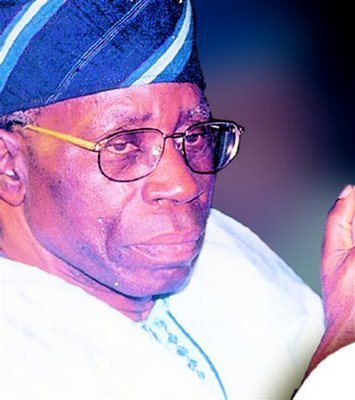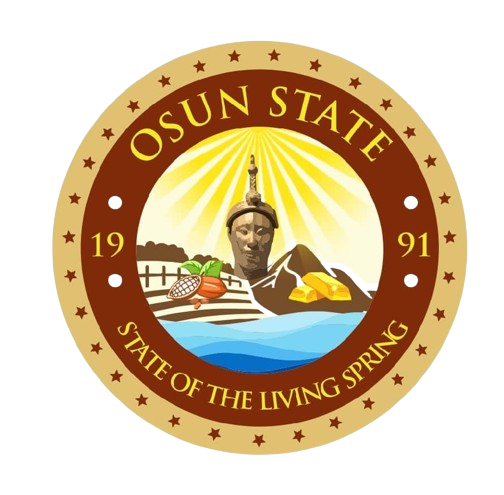
Osun: In Remembrance Of Ajibola Ige – Akin Osuntokun
 I have always had an ambivalent attitude towards the politics of Osun State since the death of Chief Bola Ige in December 2001. It is routine for him to spend his Christmas break at his home town, Esa-Oke, and usually arrived there on the 23rd December. In the year of his death, he told me he would arrive a day earlier than this routine schedule and so in anticipation of the variation, I went to his country home on the evening of 22nd December to visit him. Esa-Oke and my town Okemesi are neighbours separated only by a 10-minute drive and our families are some sort of ancestral cousins.
I have always had an ambivalent attitude towards the politics of Osun State since the death of Chief Bola Ige in December 2001. It is routine for him to spend his Christmas break at his home town, Esa-Oke, and usually arrived there on the 23rd December. In the year of his death, he told me he would arrive a day earlier than this routine schedule and so in anticipation of the variation, I went to his country home on the evening of 22nd December to visit him. Esa-Oke and my town Okemesi are neighbours separated only by a 10-minute drive and our families are some sort of ancestral cousins.
It was habitual for his young friends and admirers to spend time with him, especially those of us who are also close friends of his children, Funsho and Muyiwa. I got there around 7pm and was told he had not arrived. And then the news broke in the early hours of the following morning that he had been assassinated. It turned out that as I was knocking on his doors at Esa-Oke, death was paying him an unwanted visit in Ibadan.
I first met Senator Iyiola Omisore in the company of the late Ige at Ado-Ekiti in 1998. The background to their political companionship was the pragmatic response to the pressure imposed by the brevity of the transition programme of Gen. Abdusalami Abubakar following the death of Gen. Sani Abacha. After many years of internal political exile (occasioned by the 1993 presidential election annulment crisis) Ige and the traditional Afenifere political leadership were confronted with the immediate challenge of responding effectively to the chosen option of participation in the 199899 political transition programme.
In their absence, Yoruba politicians of different political persuasion who chose to participate in the Abacha transition programme had filled the vacuum they left behind. It was practically impossible for them, within the short span of the transition programme, to re-establish fighting-fit structures of electoral mobilisation from the ward level upwards to the national level. In the circumstance they found themselves somewhat compelled them to seek recourse in the realistic strategy of co-opting the extant political structures on ground, which were largely controlled by politicians who had participated in the political programme of Abacha.
In Osun State, Omisore was the leading governorship aspirant and had built a formidable political war machine towards the realisation of this purpose. In a calculated marriage of convenience, Ige simply co-opted and matched Omisore as the running mate to Chief Bisi Akande, his protégé and follower on the Afenifere hierarchy. The general idea was that Afenifere would provide the credible political leadership to which the penitent Abacha politicians were expected to deify and defer. And for the most part, the arrangement worked as designed.
In putting this formula to practice, Ige had embarked on the herculean task of selling Omisore to the Afenifere establishment and it was in this capacity that both of them attended the Afenifere town meeting called at Ado Ekiti. The group’s leader in Ekiti State, Dr. Nathaniel Aina, openly expressed his dissatisfaction with Omisore’s presence and remarked he only tolerated him in deference to the authority figure of the deputy leader of Afenifere.
In the ensuing general election, Ige got the duo of Akande and Omisore elected as governor and deputy governor. To the extent of the potential for conflict implied in this complicated background, the crisis that pitted the two against each another was inevitable. Both of them are assertive and turbulent personalities and their disruptive incompatibility presaged the do-or-die antagonism that came to characterise the relationship between governors and their deputies.
The constitution is partly to blame by suggesting that the downfall of the governor equals the good fortune of the deputy. And so right from the onset of their tenure, there is the subconscious anticipation (by the deputy governor) of the only clear role assigned to that office by the constitution — to fill in the vacuum that may be created by the exit of his principal. All pretensions to the contrary, which politician would not secretly crave this mouth-watering opportunity?
In fretful awareness of this doomsday scenario, the governor invariably becomes susceptible to paranoia and begins to see the ghost of his deputy first thing in the morning and the last encounter at night. Remember the fierce resistance of the late President Umaru Musa Yar’Adua’s inner circle to the idea of acting President Goodluck Jonathan setting his eyes on a supposedly recuperating principal? The ancient Oyo Empire had a simple panacea to such succession psychosis. The crown prince was made to have a vested interest in the longevity of the reign of the king through the constitutional contrivance specifying that they die together. The death of the king is a compulsory invitation to the prince to equally take his earthly exit.
Prior to the change of Nigeria’s political leadership in 1998, Omisore had his sights firmly set on the governorship seat, not that of deputy governor; and from his first day in office in May 1999, the indications were that he regarded himself as governor-in-waiting (and would tell you that was the deal he had with Ige) rather than the appendage designation of deputy governor. He took the position that he occupied the office of the deputy governor as of right not a privilege and did not accommodate himself to the suppliant mentality that would make his principal comfortable.
On account of his political pedigree and rather confrontational temperament, Omisore did not fit into the tradition-bound hierarchical order of Afenifere. The simmering feud soon blew out into the open and Omisore found himself confronted less with Akande and more with the mentor and godfather.
The crisis escalated with the impeachment of Omisore and the battle line became boldly encrypted in the swampy soil of Osun State. The sacred palace of the Ooni at Ile-Ife played host to the deux-ex-machina (the catalyst) to the climax of the tragic drama. It was the arena of Ige’s last public appearance and where his unprecedented physical molestation signposted the grim fate that awaited him.
The inability of the Nigerian state to unravel the mystery of the late attorney-general’s sudden death has not helped Omisore’s case and persistently prompts the quip if not him then who? If he is innocent of this accusation, as his sympathisers had repeatedly argued, then he would be the victim of the gravest injustice.
Sincere friends and associates of the Peoples Democratic Party (PDP) governorship candidate often marvel at his penchant for overstating his importance — arrogating to himself godfather influence over issues he has little or no leverage and knew little about. He has persistently got himself into trouble on account of this illusion of grandeur complex. At the Ife encounter, he was reported as directing some roughnecks to manhandle Ige and “get his cap for me”. Against this incriminating background, the preponderance of opinion was that the state should look no further than him in the search for Bola Ige’s killers.
Incidentally the last discussion I had with anyone on the murder case was with a former governor of the state, who categorically dismissed any attribution of the murder to Omisore as false and unfounded. He believed that the incident was the case of an armed robbery gone horribly wrong. In an ironical twist, the same personality wove a narrative of the murder in a most devastating propaganda attack on Omisore at Governor Rauf Aregbesola’s mega rally a few days before the August 9th governorship election.
He recalled that all the key PDP-related political appointments from Osun State including the Minister of Police Affairs, the national secretary of the PDP, the state chairman of PDP, and an anointed senatorial aspirant in the state, were co-detainees with Omisore as suspects in the murder of Ige. It was a propaganda coup — a rousing reminder and incitement to the troubled conscience of the Osun electorate to default on the side of the American legal cannon, which stipulates that an accused has to prove his innocence rather than being deemed innocent until proven guilty by the law as in the tradition of British jurisprudence.
At the nomination of Jelili Adesiyan as ministerial candidate from Osun State, I had argued that it was a strategic political blunder on the part of Omisore. Anybody running for the governorship of the state, who is remotely implicated in the controversy over the Ige murder case, can do without the liability of reopening this deep-seated political wound by refraining from any action with a potential to reawaken public consciousness all over again on such a heart-wrenching tragedy. Typically the PDP governorship flag bearer could not just resist the opportunity to flaunt the range and depth of his powerful connections and so he went ahead to nominate an individual whose sponsorship no one could be in any doubt.
To make a bad case worse, Omisore’s propaganda, publicity and goodwill outreach was practically non-existent. He had no promotional message on either AIT or Channels all through his campaigns. The double jeopardy here is that his opponents in the election are past masters in the science and art of propaganda in Nigeria.
In the present political configuration of this country, I’m a committed member and partisan of the PDP. Does this commitment stop short of regretting Omisore’s defeat? Since I’m in no position to categorically rule him in or out of culpability in the death of Ige, the answer has to be yes. And in specific terms of the politics of the South-west, I’m concerned more with the regional preference in the forthcoming presidential election than the outcome of state governorship elections.
THIS DAY



